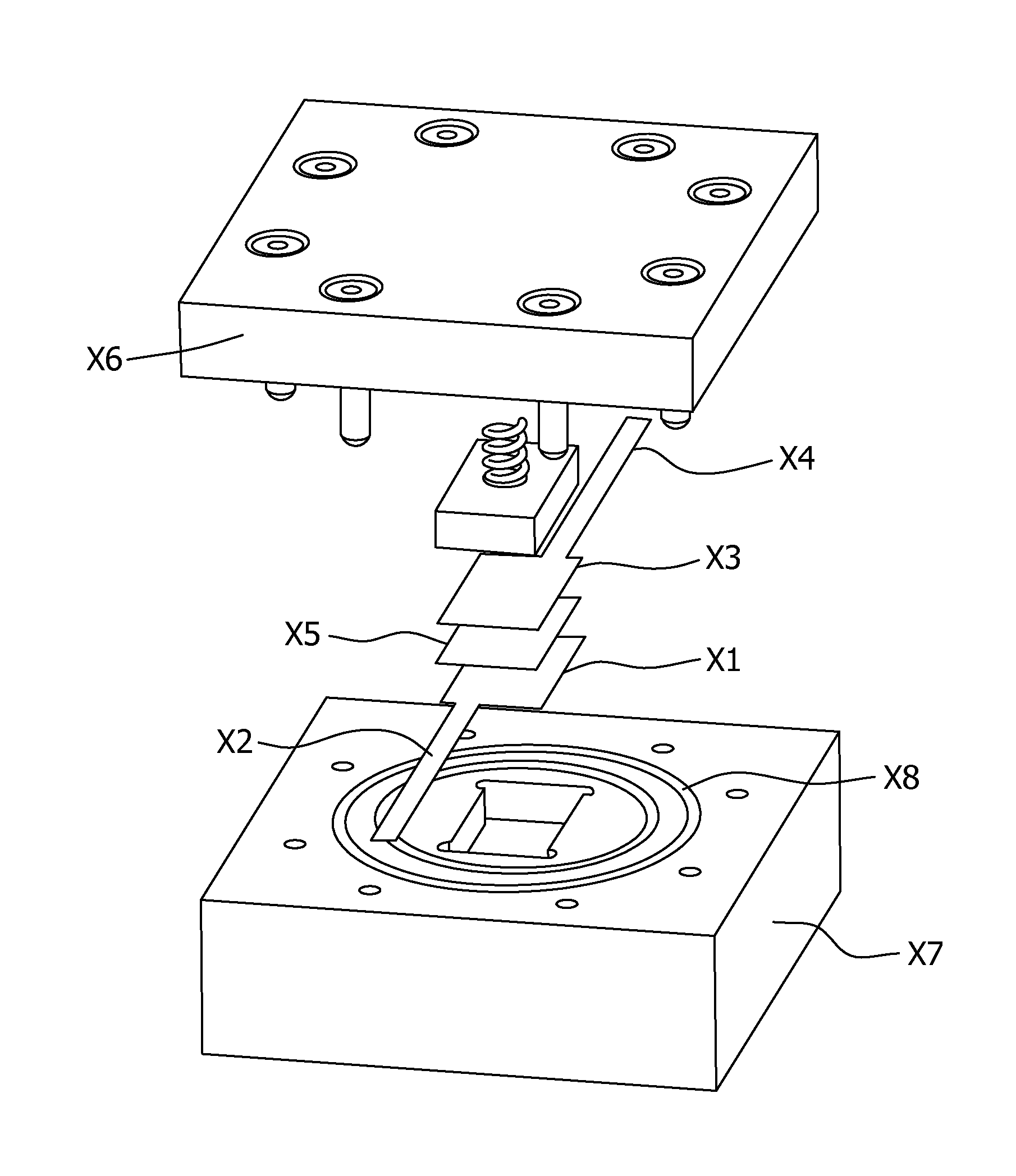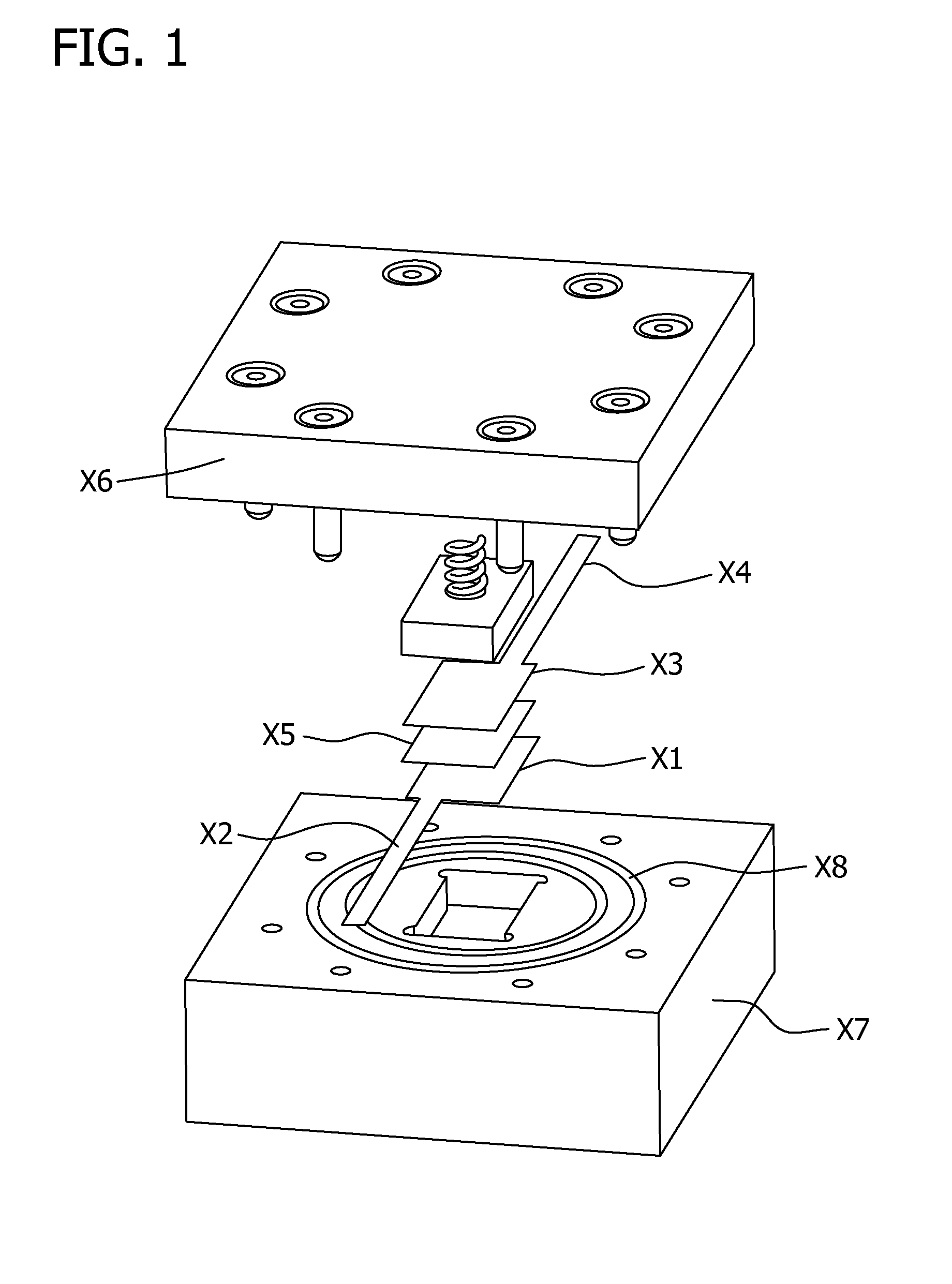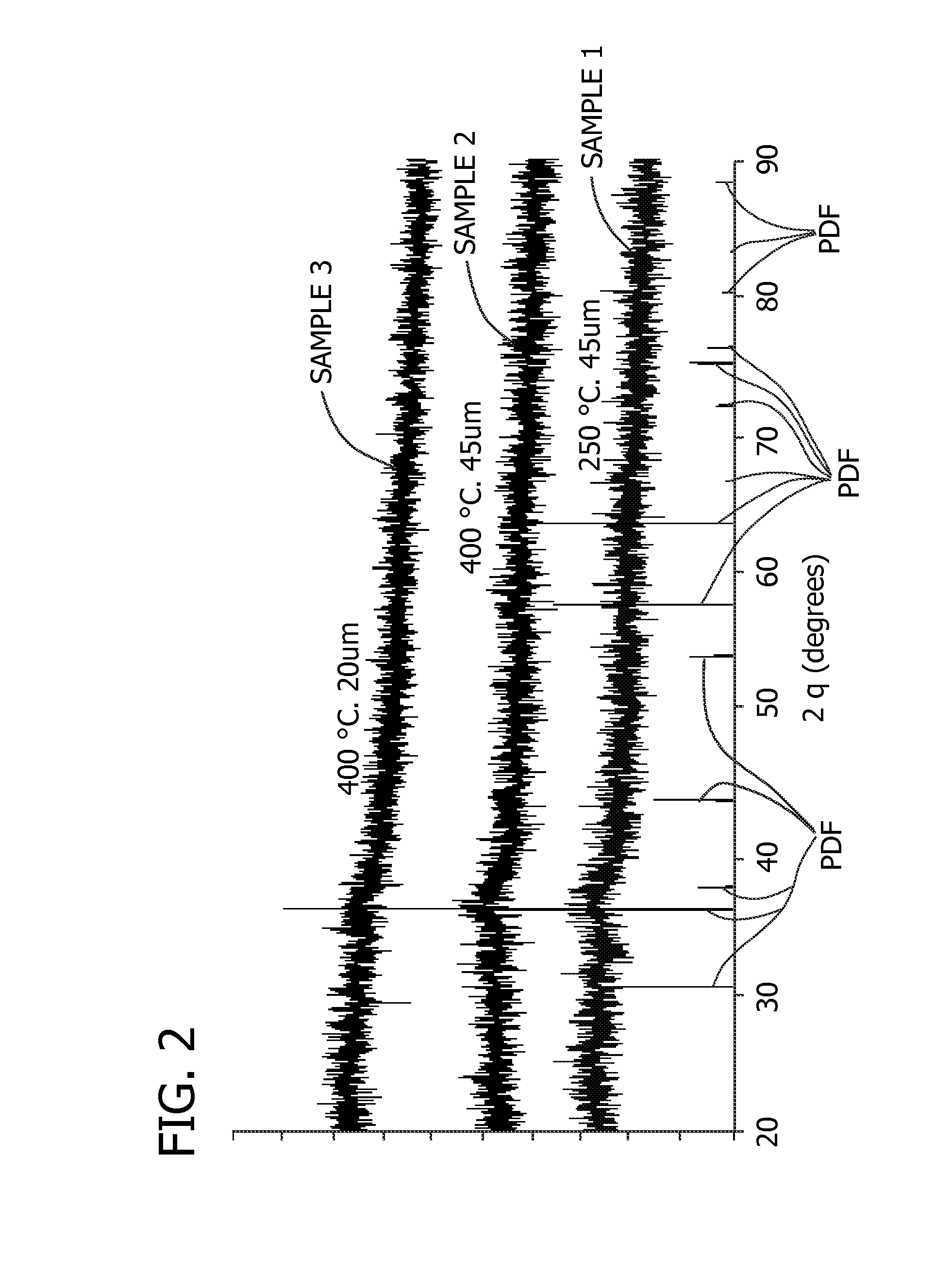Non-aqueous cell having amorphous or semi-crystalline copper manganese oxide cathode material
a cathode material, non-aqueous technology, applied in the direction of non-aqueous electrolyte cells, cell components, cell maintainance/servicing, etc., can solve the problem of less energy density than desired
- Summary
- Abstract
- Description
- Claims
- Application Information
AI Technical Summary
Benefits of technology
Problems solved by technology
Method used
Image
Examples
example 1
[0081]CuaMnbOc was prepared as follows:
[0082]CuSO4.5H2O (0.25 moles) and MnSO4.H2O (0.25 moles) were dissolved in an appropriate amount of deionized water to form a solution. About 100 grams of potassium hydroxide solution (20%) were added drop-wise to the stirred solution of copper and manganese sulfate. The resulting precipitate was collected by filtration and thoroughly washed with deionized water, and dried at 60° C. for about 24 hours. The dried material was then placed in an oven and heated in air at approximately 250° C. for about 15 hours. Finally, the product was ground using mortar and pestle and sieved through a sieve of 60-micron mesh.
example 2
[0083]CuaMnbOc was prepared as follows:
[0084]CuSO4.5H2O (0.05 moles) and MnSO4.H2O (0.05 moles) were dissolved in an appropriate amount of deionized water to form a solution. Then, the resulting solution was added drop-wise to stirred solution of 20% KOH containing KClO4 (0.0125 moles), which is used as an oxidizing agent. When the addition of the solution was completed, the reaction mixture was stirred for about 4 hours. The resulting precipitate was filtered and washed thoroughly and deionized with water. The material was dried at approximately 60° C. for about 24 hours. Prior to being used as a cathode active material, the dried sample was heat-treated at approximately 250° C. for up to 24 to 72 hours, or at about 400° C. for approximately two hours. Optionally, the dried sample may be heat-treated at approximately 250° C. for about 15 hours.
example 3
[0085]CuSO4.5H2O (0.05 moles), MnSO4.H2O (0.05 moles) and K2S2O8 (0.0125 moles) were dissolved in an appropriate amount of deionized water to form a solution. Then, the resulting solution was added drop wise to a stirred solution of 20% KOH. When the procedure was completed, the precipitate was aged at room temperature in mother liquor for about 4 hours while stirring. The aged precipitate was filtered and washed thoroughly with deionized water. The material was dried at about 60° C. for approximately 24 hours. Prior to being used as a cathode active material, the dried sample was heat-treated at approximately 250° C. for up to 24 to 72 hours, or at about 400° C. for approximately two hours. Optionally, the dried sample may be heat-treated at approximately 250° C. for about 15 hours.
PUM
 Login to view more
Login to view more Abstract
Description
Claims
Application Information
 Login to view more
Login to view more - R&D Engineer
- R&D Manager
- IP Professional
- Industry Leading Data Capabilities
- Powerful AI technology
- Patent DNA Extraction
Browse by: Latest US Patents, China's latest patents, Technical Efficacy Thesaurus, Application Domain, Technology Topic.
© 2024 PatSnap. All rights reserved.Legal|Privacy policy|Modern Slavery Act Transparency Statement|Sitemap



